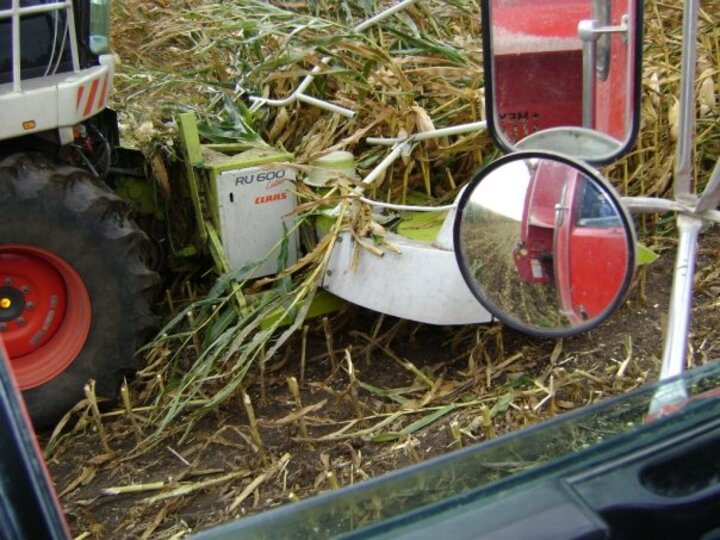Corn harvested after the kernel reaches maturation as earlage, snaplage or high-moisture corn are alternatives to harvesting dry corn for use as cattle feed.
High-moisture ear corn (earlage) is harvested with a corn combine with reduced concave clearance, leaving only the concave sieve, and at faster fan speeds. The recommended moisture content at harvest time for this product is 28% to 35%. Snaplage, as its name indicates, is harvested with a snapper head mounted on a forage harvester equipped with a kernel processor. When harvesting snaplage, corn grain moisture is closer to 30% to 35%. Incidentally, the energy value of the cob is only 23% the value of corn grain; thus, there is an incentive to reduce cob size or presence in both earlage and snaplage.
Lastly, high-moisture corn is harvested with a combine adjusted to handle corn kernels containing 28% to 35% moisture. High-moisture corn has the same nutrient attributes as corn grain except for moisture content, which is from 26% to 32%. The energy value of high-moisture corn is greater than that of dry corn grain; like that of steam-flaked corn. However, if moisture in corn is less than 25%, its energy value is closer to that of dry corn.
Why would a cattle feeder choose to feed one of these ingredients over the other, particularly when harvest date of earlage, snaplage and high-moisture corn overlap? As for many decisions on the farm, the choice to harvest corn at high moisture content with or without ear, cob and husks depends on harvest and processing equipment available, availability of other ingredients, and preference.
At harvest, both earlage and snaplage will yield greater tonnage than corn grain harvested at high moisture. The yield in tons of snaplage or earlage containing 75% or 80% corn grain, respectively, can be predicted by multiplying dry corn grain yield in bushels by 4.5% (earlage) to 5% (snaplage). Thus, a field expected to produce 200 bu/acre will likely produce 9 ton of earlage or 10 ton of snaplage.
Recently, we completed a survey of feedlots using high-moisture corn and earlage in IA, SD, ND, and NE. Results of the survey indicate that digestibility of high-moisture corn increases as material remains in the bunker but moisture content increases. This implies that nutritionists and feeders must be diligent in intake management as days in the bunker increase, particularly because this coincides with heat stress events. In contrast, feeders and nutritionists should expect earlage to have less digestibility as time passes. As this occurs, one might consider earlage as shifting from an energy and fiber source to a fiber source. Research data support this observation. Cattle fed earlage at dietary concentrations greater than 35% of the dry matter had similar feed conversion efficiency but rate of gain was slower.
Other considerations are in order. There are data that suggest that expenses to grow and harvest earlage may be greater and more variable than those to grow and harvest corn grain. This may be related to harvest costs as most feeders relying on earlage hire custom crews. Careful consideration of expenses associated with earlage crop should be made particularly when earlage makes up more than 35% of the diet.

